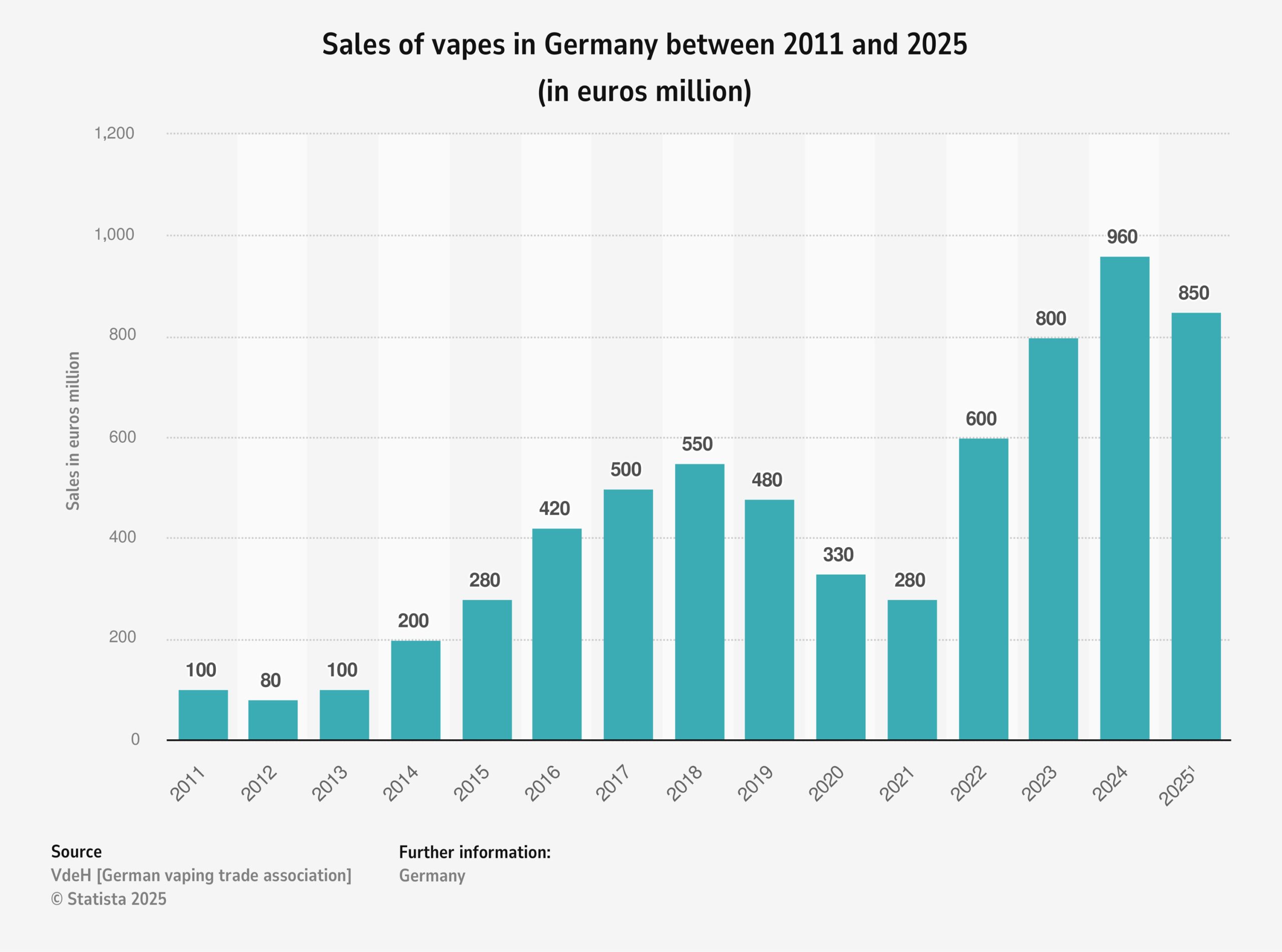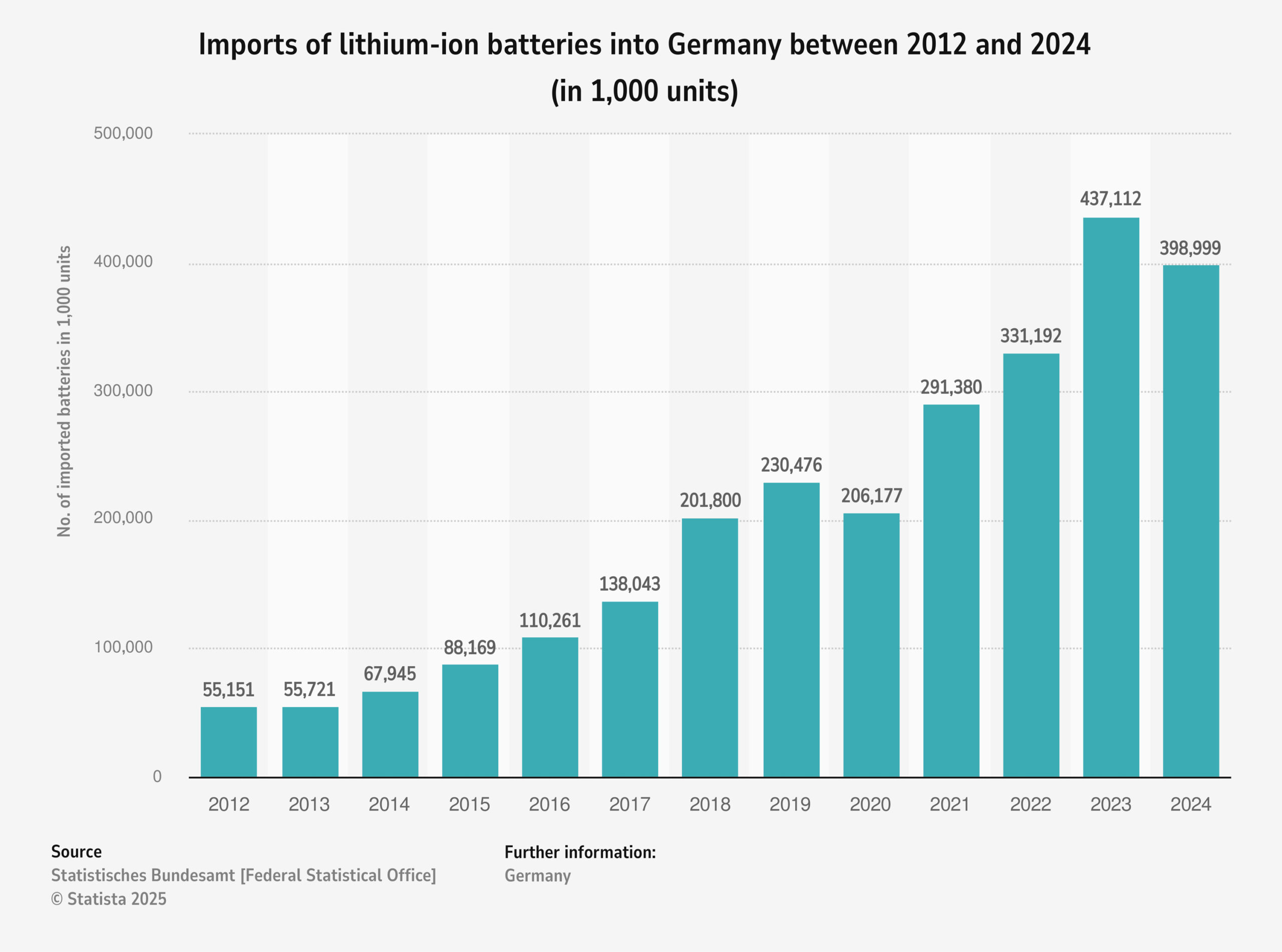A damaged lithium-ion battery is like a ticking time bomb – and the results are often devastating. Battery fires can completely destroy a recycling facility and this is certainly not a rare occurrence. This is precisely what happened at the REMONDIS Group’s plant in Dörentrup, a district in the north east region of the German state of North Rhine-Westphalia. A fire broke out there – presumably caused by a lithium-ion battery suffering a short circuit – that quickly spread and engulfed more than 3,000m². The result: over 200 firefighters had to spend more than 12 hours battling the flames. Two of them suffered minor injuries. A section of the building’s roof collapsed.
“Up to 30 fires break out at recycling businesses across Germany every single day”
What happened in Dörentrup is practically an everyday occurrence in the waste management sector. “Up to 30 fires break out at recycling businesses across Germany every single day,” reported REMONDIS managing director Thorsten Feldt. The fire brigade does not need to be called out every time thanks to two main reasons. Firstly, the courageous intervention measures taken by the staff to put the fire out. “All of our employees are trained fire protection assistants,” Feldt explained.
And secondly, the millions of euros that recycling companies have invested over the last few years to protect their businesses against fire: from the hundreds of fire extinguishers installed throughout the plants so they can be accessed quickly, to thermal imaging cameras, all the way through to using AI to help recognise objects – recycling facilities have become real high-tech businesses when it comes to preventing fires. Having said all this, however, the risk of a battery fire breaking out is so high that hardly anyone is prepared to offer recycling plants insurance.
30 times a day
That’s how often a fire breaks out at a waste processing or recycling plant in Germany like the one in this video – presumably because a lithium-ion battery was put into the wrong bin. Fortunately, this fire was put out before it could develop into something more dangerous thanks to the courageous efforts made by the staff.

Lithium-ion batteries are often hidden away in products, such as musical birthday cards and dancing teddy bears
Fire protection is not enough on its own
The fire at Dörentrup clearly demonstrates that fire protection measures are not enough on their own to protect the staff and buildings. “We need our politicians to set up the required framework conditions to ensure that as few lithium-ion batteries as possible – and preferably none – are disposed of incorrectly,” Thorsten Feldt continued. “If this doesn’t happen then our recycling infrastructure will literally go up in smoke. And then we can forget talking about recycling, the circular economy and having a resilient, climate-friendly supply of raw materials.”
One problem is that lithium-ion batteries are not always easy to spot. They are often hidden away in products, such as musical birthday cards and dancing teddy bears. “Consumers often don’t realise that these are officially electronic devices and that they have to be handed in to household recycling centres when they want to get rid of them,” explained Thorsten Feldt. The outcome: the products are put in the wrong bin, as a so-called ‘outthrow’ – the birthday cards end up in the paper bin and the teddy bears in the residual waste bin together with their lithium-ion batteries.
Single-use electronic cigarettes, more commonly known as vapes, are also proving to be a real problem. Not only have the batteries been built into these devices so that they cannot be removed, they are also often not empty when the vape has been used and thrown away. “Such products really shouldn’t be allowed,” commented Thorsten Feldt. “They are not only a massive waste of critical raw materials but also a danger to our children.” For several years now, the manufacturers – most of whom are from China – have been flooding the German market with addictive, sweet-tasting disposable vapes. Sales in the vaping industry have almost quadrupled since 2021 and lay at just under one billion euros in 2024.
Looking at the potential risks posed by disposable vapes, it is astonishing that companies are still permitted to sell these products in Germany. “Disposable vapes should be banned to protect our children and to protect our infrastructure,” said Thorsten Feldt, who is also Vice President of the BDE [Federal Association of the German Waste Management Industry].
And this can be done, as can be seen by the laughing gas ban that was recently passed by the German government. Laughing gas has become a popular recreational drug over the last few years. The cartridges, many of which are not empty, often end up in the residual waste bin or the recycling bin and cause considerable damage at waste processing and recycling plants. “If you can ban laughing gas, then you can ban disposable vapes as well,” Feldt believes. The UK has shown that this is indeed possible: single-use vapes have been banned across the UK since 01 June 2025. And the EU member states Belgium and France have also taken some courageous steps over the last few years and banned the sale of disposable vapes in their countries.
Banning disposable vapes would mean that one source of danger would be taken out of the equation. It would not, however, solve the overall problem. An ever-growing number of products contain lithium-ion batteries. According to the Statistisches Bundesamt [Federal Statistical Office], around 400 million lithium-ion batteries were imported into Germany in 2024 alone. And this figure does not include the approx. 74 million lithium button cell batteries – those really small batteries found, for example, in greeting cards.


Why battery fires are so dangerous
Lithium-ion batteries have a much greater energy density than comparable systems. They can also store a large amount of energy in a very small space – ensuring that mobiles, laptops and other mobile devices are supplied with the power they need. But delivering such a high performance also has its price. A short circuit in such a battery sets off a dangerous chain reaction. A short circuit happens when the so-called separator – the component used to separate the positive and negative terminals in a battery – is damaged. This allows the densely stored energy to be released uncontrollably. For the most part, the initial chemical reaction remains unnoticed. During this time, however, the inside of the battery slowly heats up and releases more and more energy. The final reaction then happens very quickly: a hot jet of flame – burning at over 1,000°C – shoots out of the plastic casing and ignites whatever is close by. In some cases, the battery may even explode and the consequences here are just as dire. Experts call this destructive process a ‘thermal runaway’.
“Our politicians are leaving the circular economy in the lurch”
“As more and more products are likely to be electrified in the future, we need to have a regulatory framework that is robust enough to keep up with these as well,” remarked Feldt. The scheme that Germany uses to collect waste electrical and electronic equipment is also proving to be one of the problems. According to statistics published by the BMUKN [Federal Environment Ministry], the collection rate lay at just 31.7% in 2022 – a record low.
With just over 50% of old batteries being collected separately, Germany’s dedicated old battery collection scheme has also not achieved the level required to protect the country’s recycling infrastructure against battery fires. Which is why the BDE has been calling for the introduction of a battery deposit return scheme for many years now. “A deposit needs to be charged on all lithium batteries – no matter whether they can or cannot be removed from the various devices,” BDE Vice President Feldt remarked. “This would significantly increase collection rates, protect our staff and plants and ensure that the batteries are collected, transported and recycled safely by professionals.”
Politicians, however, have been reluctant to introduce such a measure for years now. The latest draft of the Federal Electrical and Electronic Equipment Act [ElektroG] contains neither a battery deposit nor the industry’s hoped-for extension of the producer responsibility to cover fire prevention and damage settlement. This could be solved by setting up a fire protection fund that all companies manufacturing and placing batteries onto the market would have to contribute towards. These funds could then be used to help cover the costs for fire protection measures and the damage caused by their products. “None of this is mentioned in the draft ElektroG. Our politicians are leaving the circular economy in the lurch,” concluded Thorsten Feldt.
Image credits: image 1: Shutterstock: DestinaDesign, Freepik: kjpargeter; image 2: Adobe Stock: jcfotografo; image 3: YarikL












